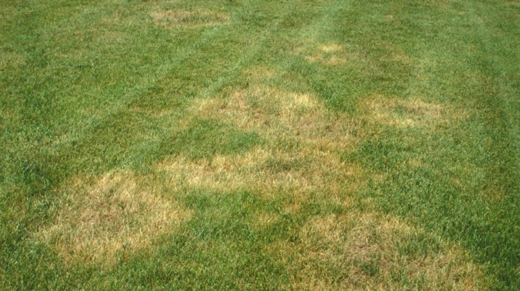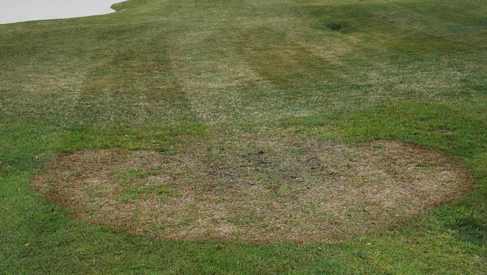Brown Patch and Large Patch of Turfgrass
go.ncsu.edu/readext?665058
en Español / em Português
El inglés es el idioma de control de esta página. En la medida en que haya algún conflicto entre la traducción al inglés y la traducción, el inglés prevalece.
Al hacer clic en el enlace de traducción se activa un servicio de traducción gratuito para convertir la página al español. Al igual que con cualquier traducción por Internet, la conversión no es sensible al contexto y puede que no traduzca el texto en su significado original. NC State Extension no garantiza la exactitud del texto traducido. Por favor, tenga en cuenta que algunas aplicaciones y/o servicios pueden no funcionar como se espera cuando se traducen.
Português
Inglês é o idioma de controle desta página. Na medida que haja algum conflito entre o texto original em Inglês e a tradução, o Inglês prevalece.
Ao clicar no link de tradução, um serviço gratuito de tradução será ativado para converter a página para o Português. Como em qualquer tradução pela internet, a conversão não é sensivel ao contexto e pode não ocorrer a tradução para o significado orginal. O serviço de Extensão da Carolina do Norte (NC State Extension) não garante a exatidão do texto traduzido. Por favor, observe que algumas funções ou serviços podem não funcionar como esperado após a tradução.
English
English is the controlling language of this page. To the extent there is any conflict between the English text and the translation, English controls.
Clicking on the translation link activates a free translation service to convert the page to Spanish. As with any Internet translation, the conversion is not context-sensitive and may not translate the text to its original meaning. NC State Extension does not guarantee the accuracy of the translated text. Please note that some applications and/or services may not function as expected when translated.
Collapse ▲Under warm and humid conditions, the fungus, Rhizoctonia solani causes brown patch on cool-season turfgrasses such as Fescue and Ryegrass and large patch on warm-season grasses, including Bermuda, Centipede, St. Augustine, and Zoysia grass.
As the name implies, brown patch is characterized by brown or tan patches of diseased turf ranging from 2 to 3 inches in diameter. Symptom development varies according to mowing height. Turfgrass maintained above 1-inch show irregular silver-gray or tan lesions with a thin, dark-brown border. Turfgrass that is maintained below 1-inch, show no distinct lesions but will exhibit dieback. All turfgrass within an affected area may not be mortally damaged within a developing patch; therefore, affected turf may recover once disease pressure is reduced. Areas with poor air movement, soil drainage, and excessive shade are more conducive to disease development. Fertility amendments such as nitrogen can also increase disease pressure since a lush, dense turf is highly susceptible to infection.
Large patch occurs during the spring and fall when warm-season turfgrasses are entering or exiting winter dormancy. Large circular patches ranging in diameter from less than 3.3 feet to 26.4 feet characterize the disease. Disease symptoms are visible on the leaf sheaths, where water-soaked, reddish-brown or black lesions are observed resulting in foliar dieback. Factors such as excessive soil moisture, thatch and lower turf canopy encourage disease development. Environmental factors including poor drainage, shade, restricted air movement, or excessive irrigation increase disease severity.
Minimizing environmental factors through cultural methods and applying a good spray program is the best way to manage this disease in your lawn. Few effective fungicides are available for the general public to use for large patch management, so emphasis should be placed in cultural control methods. For more information about horticulture contact Colby Griffin at 919-496-3344 or colby_griffin@ncsu.edu.






